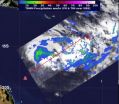(Press-News.org) Sniffing, a common behavior in dogs, cats and other animals, has been observed to also serve as a method for rats to communicate—a fundamental discovery that may help scientists identify brain regions critical for interpreting communications cues and what brain malfunctions may cause some complex social disorders.
Researchers have long observed how animals vigorously sniff when they interact, a habit usually passed off as simply smelling each other. But Daniel W. Wesson, PhD, of Case Western Reserve University School of Medicine, whose research is published in Current Biology, found that rats sniff each other to signal a social hierarchy and prevent aggressive behavior.
Wesson, who drew upon previous work showing that, similar to humans, rodents naturally form complex social hierarchies, used wireless methods to record and observe rats as they interacted. He found that, when two rats approach each other, one communicates dominance by sniffing more frequently, while the subordinate signals its role by sniffing less. Wesson found that if the subordinate didn't do so, the dominant rat was more likely to become aggressive to the other.
Wesson theorized the dominant rat was displaying a "conflict avoidance signal," similar to a large monkey walking into a room and banging its chest. In response, the subordinate animal might cower and look away, or in the case of the rats, decrease its sniffing.
"These novel and exciting findings show that how one animal sniffs another greatly matters within their social network," said Wesson, an associate professor of neurosciences. "This sniffing behavior might reflect a common mechanism of communication behavior across many types of animals and in a variety of social contexts. It is highly likely that our pets use similar communication strategies in front of our eyes each day, but because we do not use this ourselves, it isn't recognizable as 'communication'."
Wesson's findings represent the first new form of communication behavior in rats since it was discovered in the 1970s that they communicate through vocal ultrasonic frequencies. The research provides a basis for understanding how neurological disorders might impact the brain's ability to conduct normal, appropriate social behaviors.
Wesson's laboratory will use these findings to better understand how certain behaviors go awry. Ultimately, the hope is to learn whether this new form of communication can help explain how the brain controls complex social behaviors and how these neural centers might inappropriately deal with social cues.
###
Wesson's research is supported by grants from the National Science Foundation, #IOS-1121471, the Mount Sinai Health Care Foundation and the University Hospitals Case Medical Center Spitz Brain Health Fund.
About Case Western Reserve University School of Medicine
Founded in 1843, Case Western Reserve University School of Medicine is the largest medical research institution in Ohio and is among the nation's top medical schools for research funding from the National Institutes of Health. The School of Medicine is recognized throughout the international medical community for outstanding achievements in teaching. The School's innovative and pioneering Western Reserve2 curriculum interweaves four themes--research and scholarship, clinical mastery, leadership, and civic professionalism--to prepare students for the practice of evidence-based medicine in the rapidly changing health care environment of the 21st century. Nine Nobel Laureates have been affiliated with the School of Medicine.
Annually, the School of Medicine trains more than 800 MD and MD/PhD students and ranks in the top 25 among U.S. research-oriented medical schools as designated by U.S. News & World Report's "Guide to Graduate Education."
The School of Medicine's primary affiliate is University Hospitals Case Medical Center and is additionally affiliated with MetroHealth Medical Center, the Louis Stokes Cleveland Department of Veterans Affairs Medical Center, and the Cleveland Clinic, with which it established the Cleveland Clinic Lerner College of Medicine of Case Western Reserve University in 2002. http://casemed.case.edu
END
What makes us happy? Family? Money? Love? How about a peptide?
The neurochemical changes underlying human emotions and social behavior are largely unknown. Now though, for the first time in humans, scientists at UCLA have measured the release of a specific peptide, a neurotransmitter called hypocretin, that greatly increased when subjects were happy but decreased when they were sad.
The finding suggests that boosting hypocretin could elevate both mood and alertness in humans, thus laying the foundation for possible future treatments of psychiatric disorders like ...
TORONTO, ON – March 7, 2013: A new technique developed by U of T Engineering Professor Ted Sargent and his research group could lead to significantly more efficient solar cells, according to a recent paper published in the journal Nano Letters.
The paper, "Jointly-tuned plasmonic-excitonic photovoltaics using nanoshells," describes a new technique to improve efficiency in colloidal quantum dot photovoltaics, a technology which already promises inexpensive, more efficient solar cell technology. Quantum dot photovoltaics offers the potential for low-cost, large-area solar ...
NEW BRUNSWICK, N.J. – Married couples who have attained higher levels of education are less likely to divorce than less-educated couples, but a new study conducted at Rutgers School of Social Work points to significant racial differences.
"African-American women don't seem to enjoy the same degree of protection that education confers on marriage," said Jeounghee Kim, assistant professor at the school. "For white Americans, higher education is related to a lower chance of divorce, and this protective effect of education on marriage increased consistently among the recent ...
FROSTBURG, MD (March 7, 2013)—Prairie dogs pull up stakes and look for a new place to live when all their close kin have disappeared from their home territory--a striking pattern of dispersal that has not been observed for any other species. This is according to a new study published in Science by behavioral ecologist John Hoogland, Professor at the University of Maryland Center for Environmental Science's Appalachian Laboratory. He has been studying the ecology and social behavior of prairie dogs in national parks in Arizona, South Dakota, and Utah for the last 40 years.
For ...
University of British Columbia researchers have successfully normalized the production of blood vessels in the brain of mice with Alzheimer's disease (AD) by immunizing them with amyloid beta, a protein widely associated with the disease.
While AD is typically characterized by a build-up of plaques in the brain, recent research by the UBC team showed a near doubling of blood vessels in the brain of mice and humans with AD.
The new study, published online last week in Scientific Reports, a Nature journal, shows a reduction of brain capillaries in mice immunized with ...
Computer scientists at the University of California, San Diego, and Google have developed a novel approach that allows the massive infrastructure powering cloud computing as much as 15 to 20 percent more efficiently. This novel model has already been applied at Google. Researchers presented their findings at the IEEE International Symposium on High Performance Computer Architecture conference Feb. 23 to 27 in China.
Computer scientists looked at a range of Google web services, including Gmail and search. They used a unique approach to develop their model. Their first ...
Recently Science Magazine invited JQI fellow Chris Monroe and Duke Professor Jungsang Kim to speculate on ion trap technology as a scalable option for quantum information processing. The article is highlighted on the cover of this week's issue, which is dedicated to quantum information. The cover portrays a photograph of a surface trap that was fabricated by Sandia National Labs and used to trap ions at JQI and Duke, among other laboratories.
Trapped atomic ions are a promising architecture that satisfies many of the critical requirements for constructing a quantum computer. ...
NASA's Tropical Rainfall Measuring Mission satellite noticed areas of heavy rainfall in low pressure System 92P hours before it became the nineteenth tropical cyclone of the Southern Pacific Ocean.
NASA's TRMM satellite captured a look at the rainfall rates within low pressure System 92P on March 7 at 0023 UTC (March 6 at 7:23 p.m. EST), just hours before it became Tropical Cyclone 19P (TC 19P). TRMM data indicated that heavy rain was falling at a rate of 2 inches/50 mm per hour around the center of circulation, and that some of the thunderstorms were powerful as they ...
This press release is available in French.
Montreal, March 7, 2013 – Just hours after the tragic shooting of 27 victims at Sandy Hook Elementary School, Twitter was overloaded with messages slamming reporters for interviewing children involved in the tragedy. While some of the journalists probably knew better but wanted the story at all costs, others were rookie reporters facing ethical decisions for the first time and unaware of the impact these interviews might have on the young survivors.
Past studies have documented that new journalists can cause a number of ...
A team of astronomers using NASA's Hubble Space Telescope has taken an important step closer to finding the birth certificate of a star that's been around for a very long time.
"We have found that this is the oldest known star with a well-determined age," said Howard Bond of Pennsylvania State University in University Park, Pa., and the Space Telescope Science Institute in Baltimore, Md.
The star could be as old as 14.5 billion years (plus or minus 0.8 billion years), which at first glance would make it older than the universe's calculated age of about 13.8 billion ...



